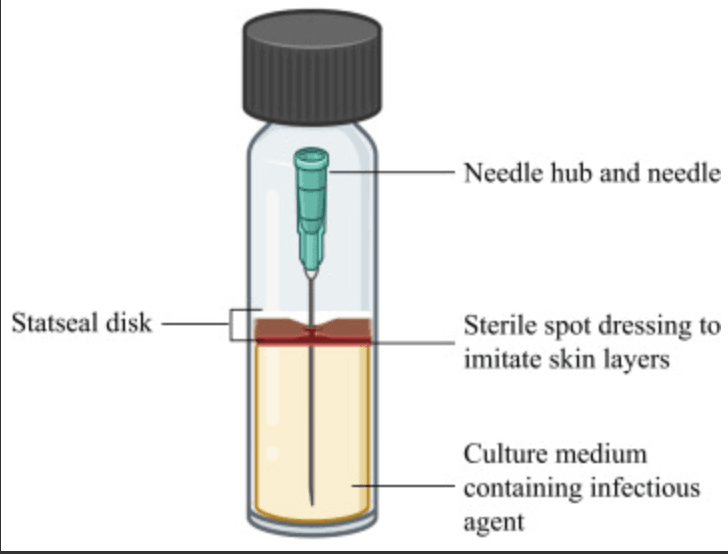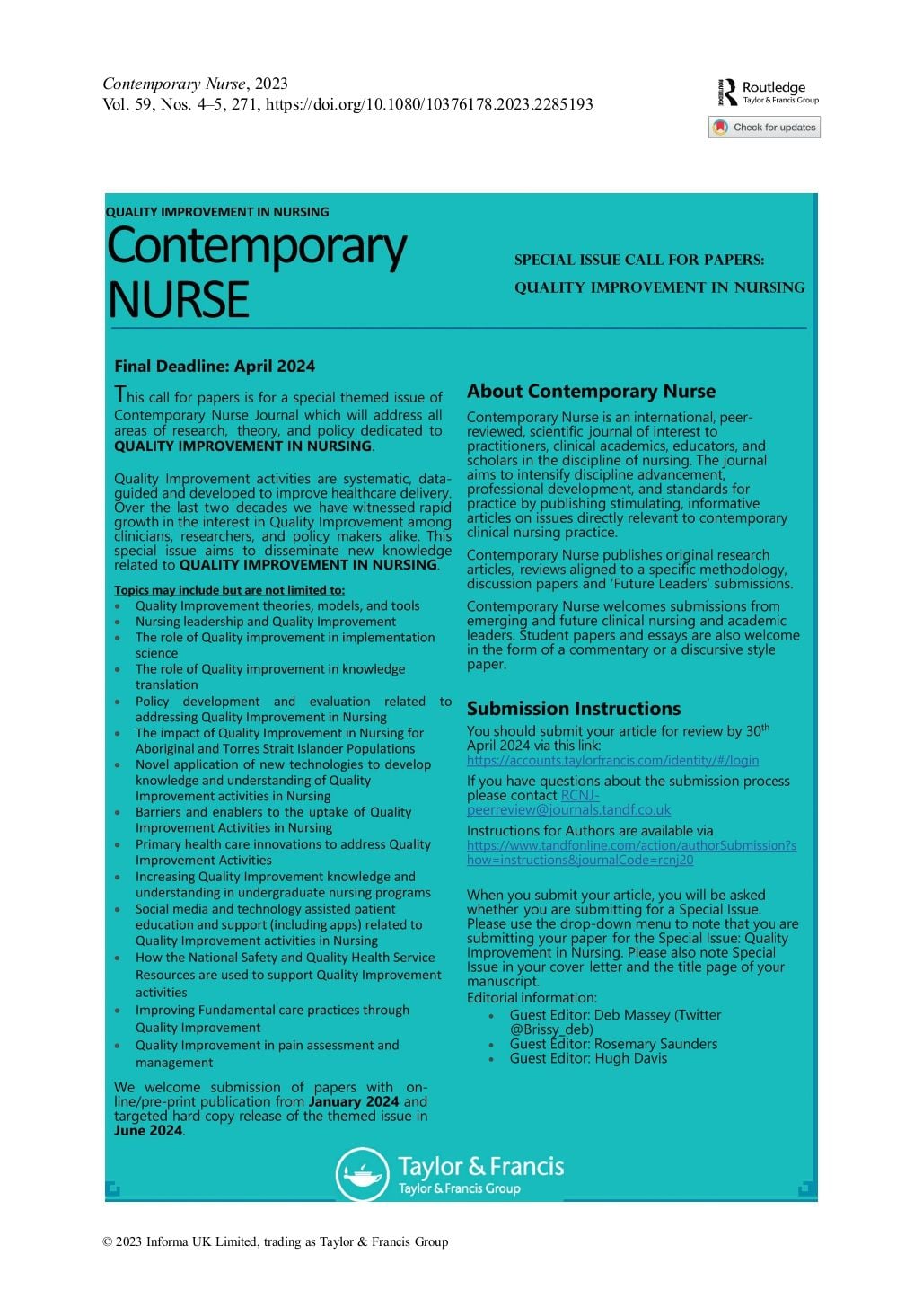Assessing Patient Experiences with Peripheral Intravenous Catheters: A Critical Evaluation of Quality of Life and Experience Measures
Posted
on 18 March 2024
Introduction
Peripheral Intravenous Catheters (PIVCs) play a crucial role in healthcare, facilitating intravenous treatments for patients. However, common issues such as insertion failure and complications can adversely affect patient outcomes and experiences. This study aimed to evaluate the suitability of generic quality of life and experience measures in assessing the experiences of patients with PIVCs.
Background
PIVCs are widely used in healthcare, with two-thirds of patients in terti...
Vascular Access Terminology
Posted by Kerrie Curtis
on 6 March 2024
Vascular Access Terminology
Common language facilitates communication between professional and organisations, the translation of evidence into clinical practice, data sharing, and research.
The Cancer Nurses Society of Australia (CNSA), eviQ and eviQ Education are leading vascular access management and education in cancer care in Australia utilizing common, contemporary terminology.
Click here to read more: https://www.cnsa.org.au/practiceresources/vascular-access-guidelines
...
| Posted in:AVATAR |
Revolutionizing Vascular Access: The Potassium Ferrate Haemostatic Disc
Posted
on 5 March 2024
)
Introduction:
Vascular access devices (VADs) play a crucial role in managing acute and chronic medical conditions. However, they are often associated with risks such as bleeding and infections. This study evaluated the antimicrobial potential of the potassium ferrate haemostatic disc as an alternative to traditional methods.
Aim:
The aim was to assess the effectiveness of the potassium ferrate disc against Gram-positive (Staphylococcus aureus), Gram-negative (Klebsiella pneumoniae, Pseudom...
Vascular access devices (VADs) play a crucial role in managing acute and chronic medical conditions. However, they are often associated with risks such as bleeding and infections. This study evaluated the antimicrobial potential of the potassium ferrate haemostatic disc as an alternative to traditional methods.
Aim:
The aim was to assess the effectiveness of the potassium ferrate disc against Gram-positive (Staphylococcus aureus), Gram-negative (Klebsiella pneumoniae, Pseudom...
| Posted in:AVATAR |
CNSA Vessel Health and Preservation Event: Unveiling the Future of Vascular Care
Posted
on 28 February 2024
)
Mark your calendars for a groundbreaking event in the world of patient-focused cancer care! On March 19, 2024, join us online for the official launch of the second topic in the CNSA Vascular Access Clinical Practice Guidelines: Vessel Health and Preservation.
Event Highlights:
In 2021, the initial topic of the CNSA Vascular Access Clinical Practice Guidelines addressed patency, occlusion prevention, and management, sparking positive changes across healthcare settings. Now, we're thrille...
| Posted in:AVATARinfection prevention |
IVNNZ Conference March 2024 - Register Today!
Posted
on 6 February 2024
)
AVATAR is thrilled to highlight an upcoming event that our colleagues across the ditch are organizing – the IVNNZ Conference in March 2024! Set against the backdrop of beautiful Wellington, this conference promises to be an exceptional experience.
Featuring a stellar lineup of world-class speakers, including AVATAR legend Dr. Evan Alexandrou, this event is not to be missed. Here's a brief glimpse of what's in store:
Date: March 22-23, 2024
Location: The James Cook Hotel Grand ...
Location: The James Cook Hotel Grand ...
| Posted in:AVATAReducation |
Shape the Future of Nursing: Your Opportunity to Contribute to Contemporary Nurse Journal
Posted
on 5 December 2023
)
Contemporary Nurse is an international, peer-reviewed scientific journal, provides a dynamic space for practitioners, clinical academics, educators, and scholars to share groundbreaking research and insights shaping contemporary nursing practice.
Aim and Scope: Elevating Nursing Standards
The journal's mission – to advance discipline, professional development, and practice standards.
Showcasing Excellence: Call for Papers
Contemporary Nurse proudly showcases original, high-quali...
| Posted in:AVATAR |
AVATAR November 2023 Highlights: Connecting, Collaborating, and Advancing Vascular Access Knowledge!
Posted
on 29 November 2023
Greetings AVATARians! It's time to catch up on the exciting events and progress within our AVATAR community. Here's a quick roundup of the November 2023 newsletter:
1. 2023 AVA Conference, Portland, Oregon
AVATAR made a significant presence at the Association for Vascular Access Annual Meeting in Portland, Oregon. Engaging discussions, insightful presentations, and valuable connections – the conference was a hub for advancing vascular access knowledge. A special ...
| Posted in:AVATAR |
Nathan Peters Awarded for ASUM AJUM Article of the Year Award
Posted
on 16 October 2023
)
We're excited to share some fantastic news from the AVATAR team! Nathan Peters has been awarded the prestigious ASUM AJUM Article of the Year award in the 2023 Awards of Excellence in Ultrasound.
Nathan's groundbreaking article, titled 'Remotely supervised ultrasound-guided peripheral intravenous cannulation training: A prospective cohort study examining success rates and patient experience,' has had a significant impact on both the ASUM (Australasian Society for Ultrasound i...
| Posted in:AVATAR |
Thiago Lopes Silva: Bridging Patient Safety and Vascular Access
Posted
on 6 September 2023
)
Thiago Lopes Silva is a PhD candidate from the Federal University of Santa Catarina, situated in Florianopolis, an island in the south of Brazil. Thiago has come to Brisbane for six months, where he's collaborating with Professor Amanda Ullman and Dr. Gillian Ray-Barruel, leading experts in vascular access. Thiago’s research focus lies at the intersection of patient safety and vascular access.
His doctoral research project, titled "Effect of the I-DECIDED? tool on the decision...
Welcoming Dr. Hideto Yasuda: Bridging Medical Frontiers from Japan to Australia!
Posted
on 8 August 2023
)
We're thrilled to introduce you to Dr. Hideto Yasuda, a distinguished physician hailing all the way from Japan. Dr. Yasuda has embarked on an incredible journey to the University of Queensland Centre for Clinical Research (UQCCR) in Brisbane, Australia.
Dr. Yasuda brings a wealth of experience as an emergency physician and intensivist, caring for patients facing severe sepsis, acute respiratory failure, and multiple trauma. With a strong passion for improving the prevention and man...
| Posted in:AVATAReducationpatient experience |








